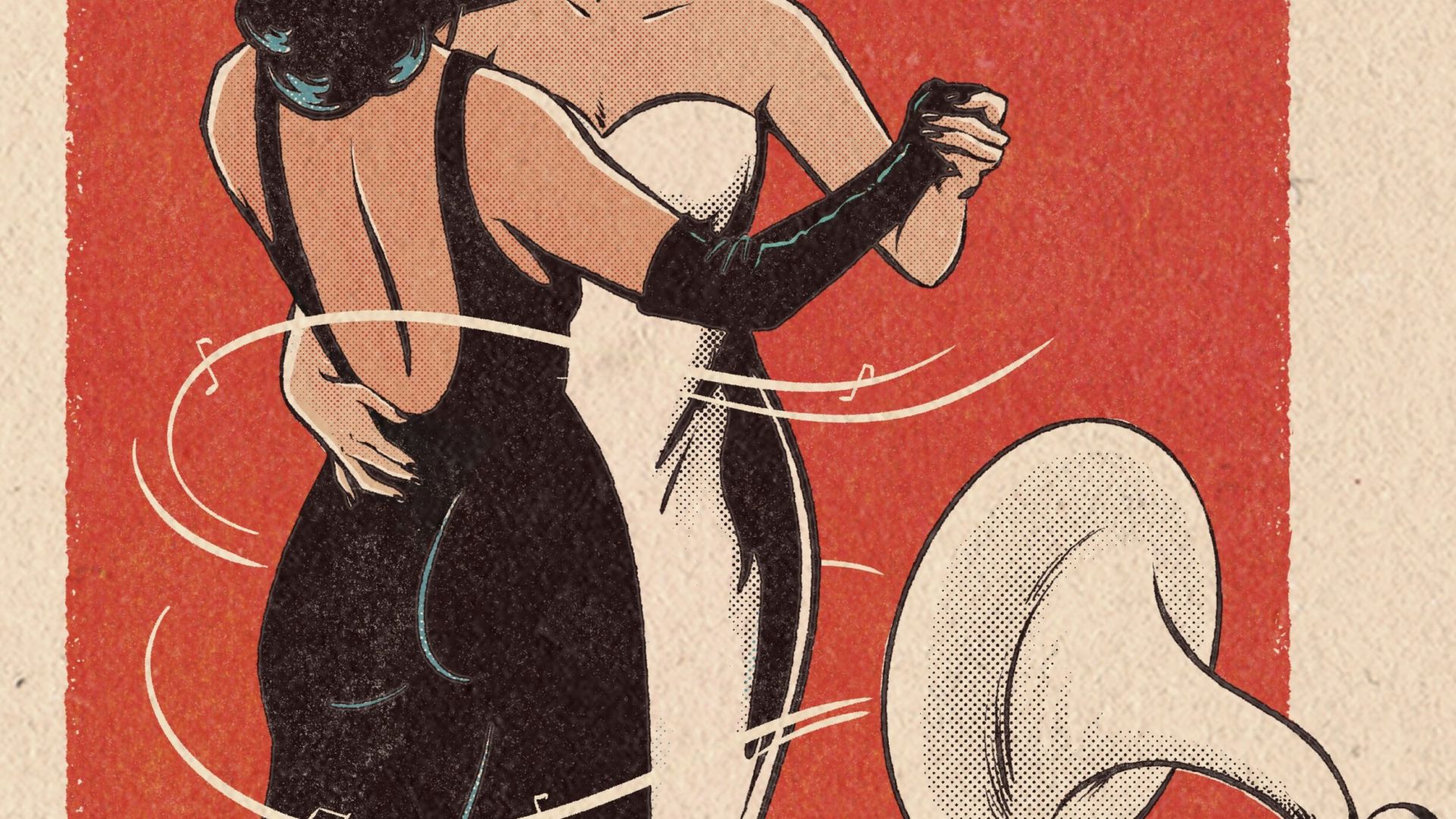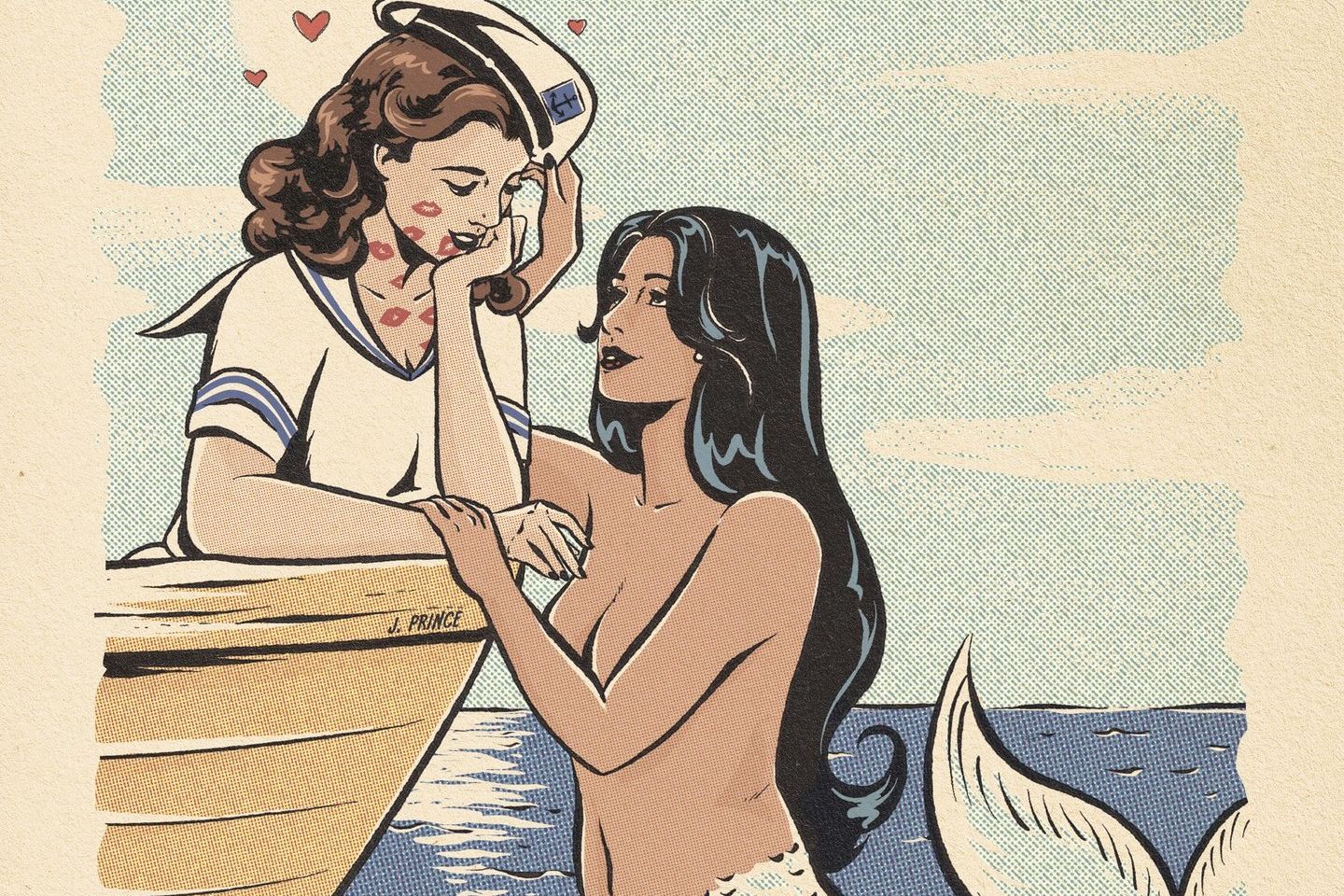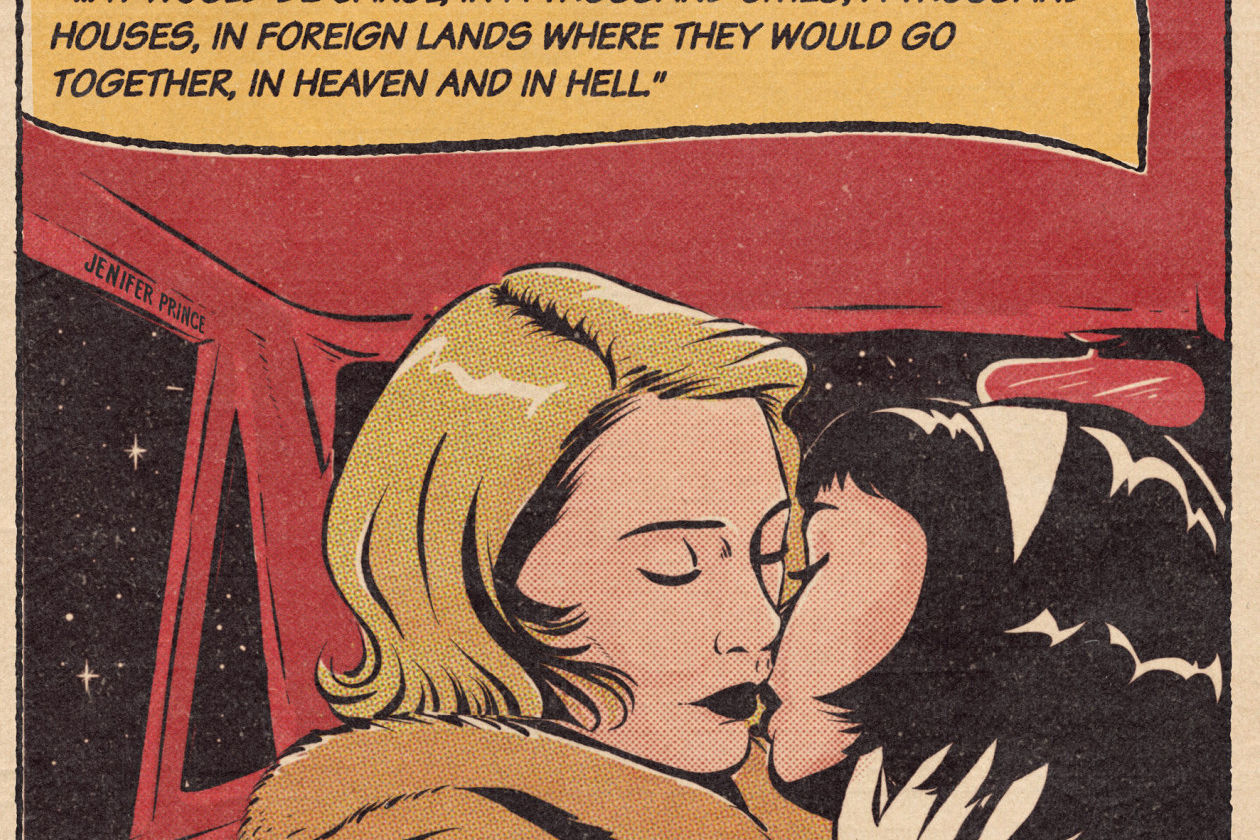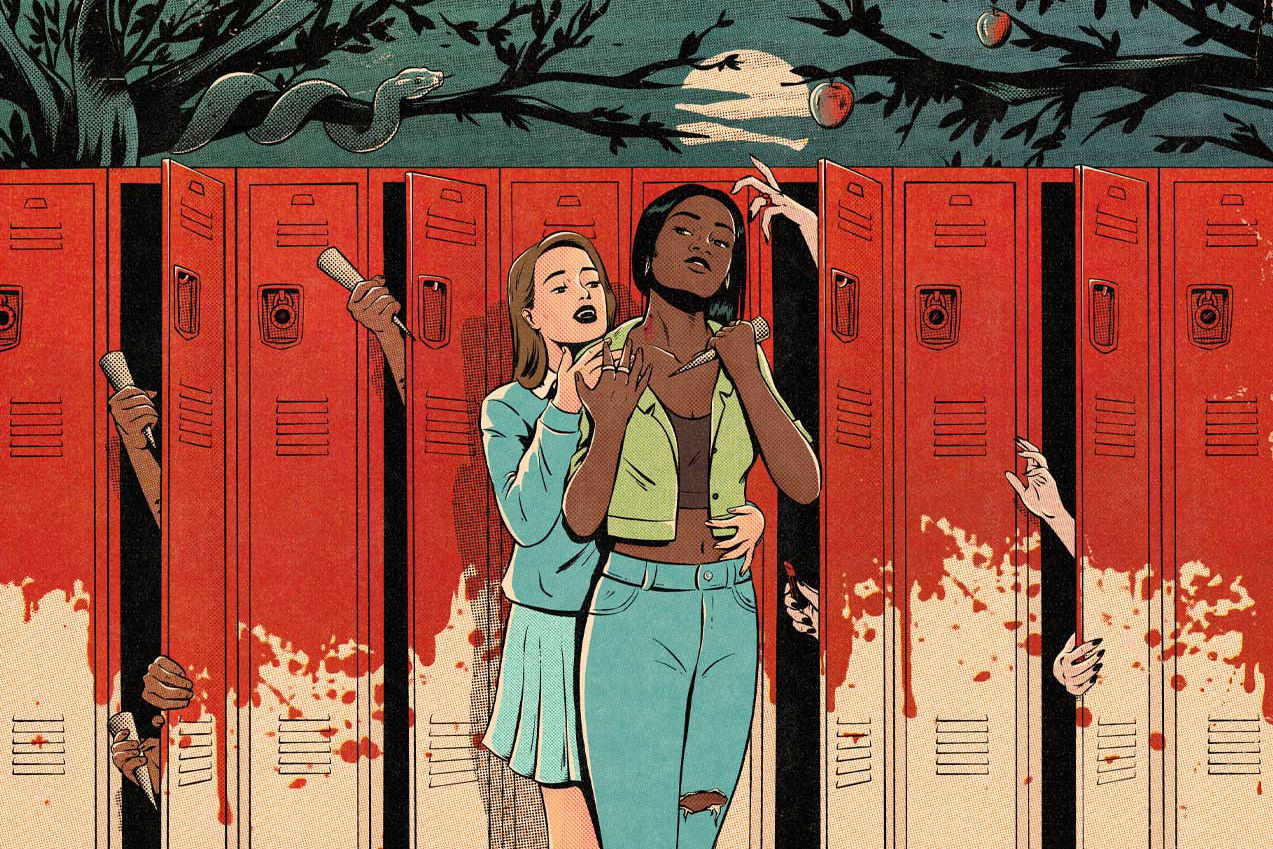Reimagining Retro Romance: An Interview with Sapphic Storyteller Jenifer Prince
With a fascination for the vintage aesthetic, Jenifer Prince has amassed a strong following for her pop art-inspired stories of sapphic love. Turning the genre on its head, Prince’s designs disrupt heteronormative expectations and visualise queer desire in a way that history has often ignored. Vertigo had the honour of speaking with Jenifer about nostalgia, her experiences as a queer woman, and the value of lesbian representation.

V: Hi Jenifer! Could you begin by introducing yourself to our Vertigo readers?
JP: Absolutely! I'm a Brazilian visual artist and illustrator obsessed with vintage aesthetics. I work as a freelance illustrator, and my authorial work is focused on lesbian and sapphic storytelling.
V: Were there any moments in your childhood that cemented your love for illustrating, or was this a desire that developed during adolescence?
JP: Growing up, drawing was definitely my favourite activity — sometimes, I would rather stay inside drawing than go outside to play with my friends. I think it was a great way to explore my creativity, but I ended up prioritising other things during the first years of my adolescence. I got back to drawing more frequently when I was around 15 years old, again as a way to work on my creativity, but this time I also used it as a tool to express my (sometimes confusing) feelings –especially regarding my sexuality.
V: With 273k Instagram followers, your unique spin on sapphic storytelling has attracted a large and appreciative audience. How long have you been creating for @jeniferrprince?
JP: I've been creating around the theme of sapphic and lesbian storytelling since my college days, but I started posting on my Instagram back in 2020. I was working as an illustrator for a t-shirt company at the time, and I was feeling like something was missing. I noticed I was happier and more motivated whenever I worked on something personal, so my girlfriend pushed me to create more personal projects, and that's when I decided to do this more consistently. My audience has grown ever since, and I couldn't be more appreciative of everyone following and interacting with me and my work!

Enchanted
V: Your designs reimagine lesbian love stories in the pulp art style of the 1940’s and ‘50s. What drew you towards this aesthetic?
JP: I like to think my style is a mixture of all my visual references. That includes midcentury comics, pulp illustration (especially lesbian pulp novel covers), old Hollywood, and midcentury propaganda. What drew me to this aesthetic is the possibility to subvert its meaning and the nostalgia it evokes, which I believe fits perfectly with how I want to approach visual storytelling and the subjects I work with. V: How do you come up with inspiration for your illustrations? JP: I draw inspiration from many different places: my current relationship, my past experiences, lesbian and sapphic media such as movies, tv shows, books and, as I mentioned before, queer history.
V: How have your own experiences as a queer woman informed your artistry?
JP: It’s my core motivation and inspiration, for sure.
I can say that my experiences as a lesbian are why and what I create. I started drawing lesbian stories while trying to navigate my own queerness.
The love stories, joy, longing, and yearning that I’m portraying are human sentiments that everyone can have regardless of their sexuality, but I’m illustrating them through a lesbian gaze.
V: I can only imagine there is little to no representation of lesbian relationships in old pulp comics. How does it feel to popularise a new spin on the genre through lesbian representation?
JP: You’re definitely right when it comes to comics. Lesbian pulp fiction, on the other hand, was very popular among lesbians in the past, and their illustrated covers are also part of my visual references. Even though many of the stories were written by men, and the majority of them had bad endings or painted the lesbian character as predatory or evil, we have some great stories and women authors who would use male pen names. The popular movie Carol is a good example: it’s based on the lesbian pulp fiction The Price of Salt and was written by Patricia Highsmith under the pseudonym “Claire Morgan”. It’s one of the rare pulp stories with a happy ending.
That said, I’m probably not creating something entirely new or even unseen, but it’s amazing to see people connecting with it; it shows how important it is to have positive lesbian representation.

Carol season
V: Your illustrations are beautifully designed and serve as a powerful testament to the endurance of art and the evolution of societal norms. What role does nostalgia play in the creation of your designs?
JP: Thank you, that's a beautiful way to put it!
I believe that nostalgia, in this case, has the role of challenging society’s heteronormative perception of the past.
It subverts the idea that homosexual beings and relationships are something modern, that it is a phase or a trend that began recently.
V: Pulp romance comics are known for depicting patriarchal standards of gender, relationships, love, and sex. How do you transform these traditionally sexist narratives into ones that empower modern audiences?
JP: That’s why I believe the female gaze is so important — regardless of art style or media, once a queer woman tells a story about two women in love, the patriarchal standards are already being challenged. The way I see it, it’s not exactly about transforming a narrative; it’s about creating new ones without following rules that don’t (have to) apply and subverting the heteronormative perception we have of that media.
V: What project are you the proudest of?
JP: I have a few illustrations that I hold dear to my heart, such as ‘Dream dancing with you’, ‘Enchanted’, and ‘I got you’. More recently, I was invited by Netflix to create an artwork to promote their show, First Kill, and I’m really proud of how it turned out!

First Kill
V: What advice would you give to young artists trying to find their style, particularly those looking to tell queer stories?
JP: My advice is to build a visual reference library: study the artists you love to learn how they did what they did; listen to yourself and your own interests, and trust the process! Your style and the way you choose to tell your stories are something you will build on naturally.
V: What does the future hold for you?
JP: I definitely have a lot of plans that I'm working on putting into practice. I want to go back to working with traditional media for specific projects, and I want to make short comics to explore my character's stories a little more. Most of all, I want to keep creating pieces that I hope will resonate with people.
If you’re looking for more work by Jenifer Prince, you can find her on Instagram @jeniferrprince or her website: https://jeniferprince.art/!

 -
-